Templeogue, Walkinstown, Rathfarnham, Firhouse
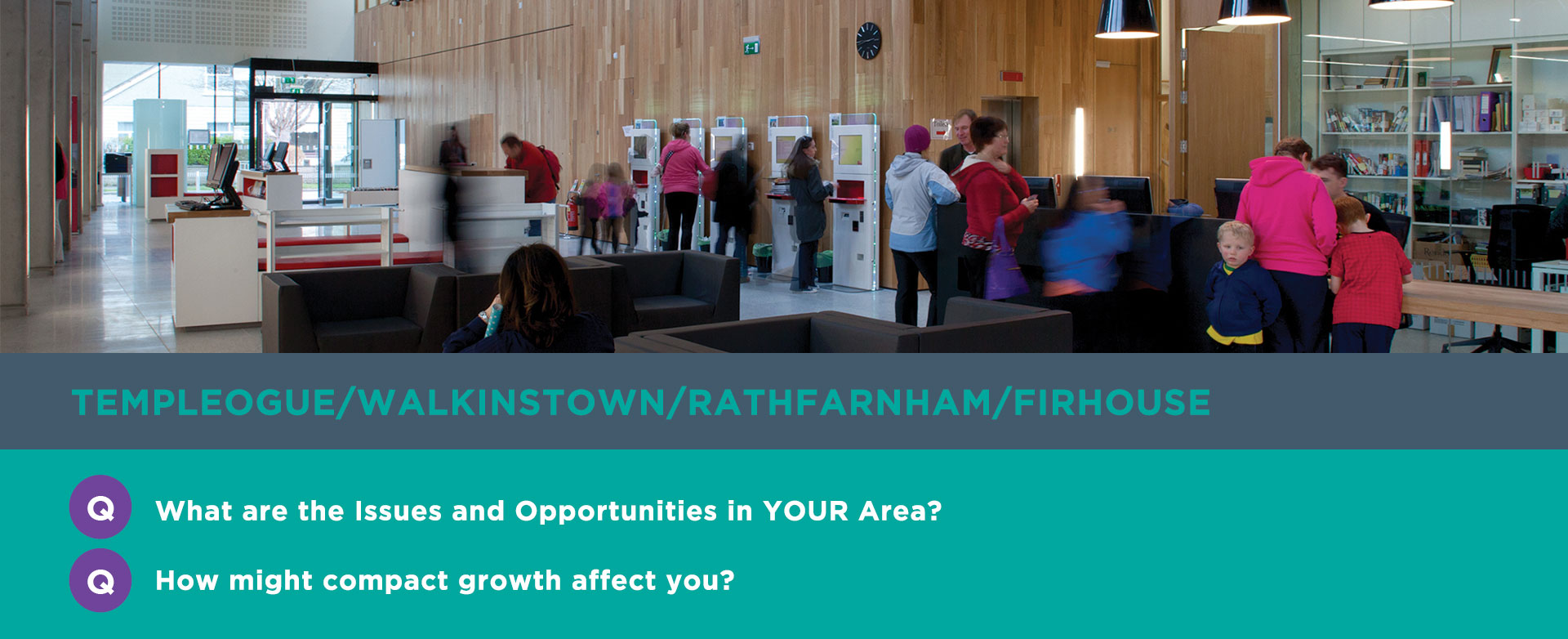
Introduction & Context
The Templeogue / Walkinstown / Rathfarnham / Firhouse neighbourhood is located 8km south-west of Dublin City Centre, forming the eastern part of South Dublin County, part of Dublin City
suburbs and the wider Metropolitan Area. The lands are defined by the central spine of the River Dodder from west to east and the rural landscape setting along the southern boundary. The M50 motorway weaves through the neighbourhood from south-east to the north. Dublin City Council administrative area is located along the north-eastern Boundary.
The neighbourhood includes bus transportation links to Dublin City Centre and to Tallaght to the west. Strong neighbourhoods exist in this area crossing administrative boundaries. The eastern section is an established suburban area in South Dublin and is characterised by mature residential neighbourhoods including Templeogue, Walkinstown, Rathfarnham and Knocklyon.
Development in the Ballycullen and Oldcourt area to the west, under the framework of a Local Area Plan, provides the remaining greenfield development potential in this neighbourhood. As these areas develop, it is vital that they do so with the necessary supporting facilities and services to facilitate the growth of sustainable communities.
This neighbourhood is home to excellent public amenities, from local shopping to schools, public parks and cultural attractions. Against the backdrop of the Dublin Mountains, the Pearse Museum, St. Enda's Park and Rathfarnham Castle are fantastic local cultural attractions. The Dodder Valley Linear Park, Tymon Park and Greenhills Park with the adjacent Marley Park and Bushy Park are all family-friendly public parks that are all family-friendly public parks that are full of life and activity.
Built Environment & Placemaking
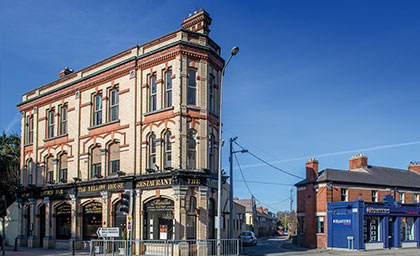
Key to providing great places in which to live will be striking a balance between the delivery of a compact pattern of growth involving increased density andgreater levels of infill development with the need for high-quality design and a strong emphasis on placemaking. The successful delivery of such measures within this neighbourhood will require a mix of uses, connections to sustainable transport and infrastructure, a joined-up approach to community planning and a strategic vision which includes a greater emphasis on placemaking.
Climate Action & Energy
Future development within this neighbourhood will aim to reduce climate change impacts at a local level through efficient settlement and travel patterns, energy use and the protection and provision of green infrastructure. This neighbourhood will aim to increase access to sustainable transport routes in order to integrate land use and transport in a sustainable way and reduce carbon emissions.
Population Growth & Housing
National and Regional planning policy emphasises; compact growth in the Dublin Metropolitan Area, particularly within the M50 (in the case of this neighbourhood all lands to the east). The National Planning Framework emphasises the importance of placemaking through the development of attractive places supported by existing and planned transport infrastructure now and into the future. The challenge for this plan in facilitating increased population and housing in this area will be to identify appropriate brownfield and infill development opportunities which protect existing amenities, underpin existing physical and community infrastructure and expand this where necessary.
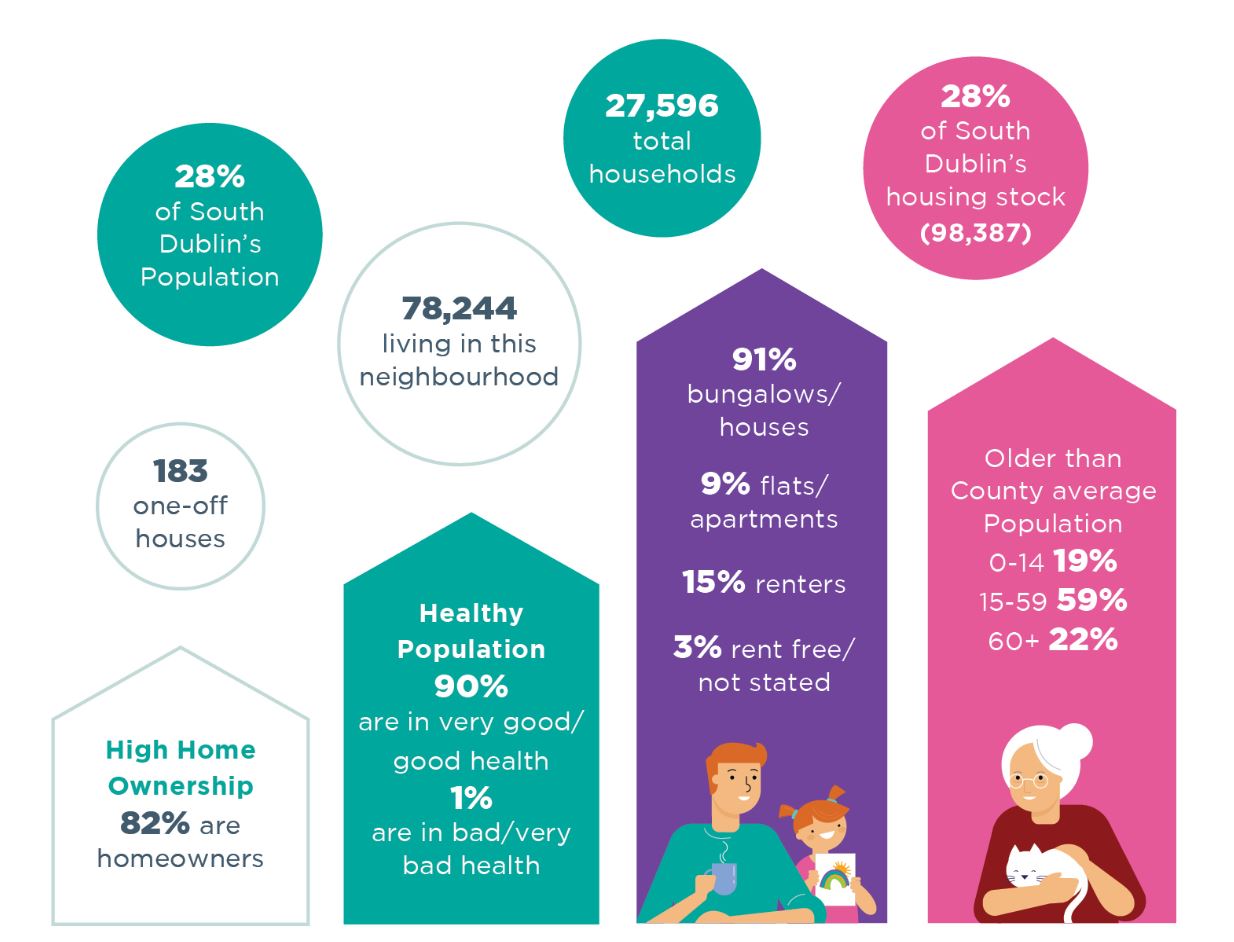
Sustainable Movement
Guided by National and Regional Transport policy, the emphasis of the Plan will be to reduce the demand on private travel in favour of public transport, cycling and walking. Census Small Area Population figures from 2016 show that 86% of residents journey time to work in this area is under 1 hour.
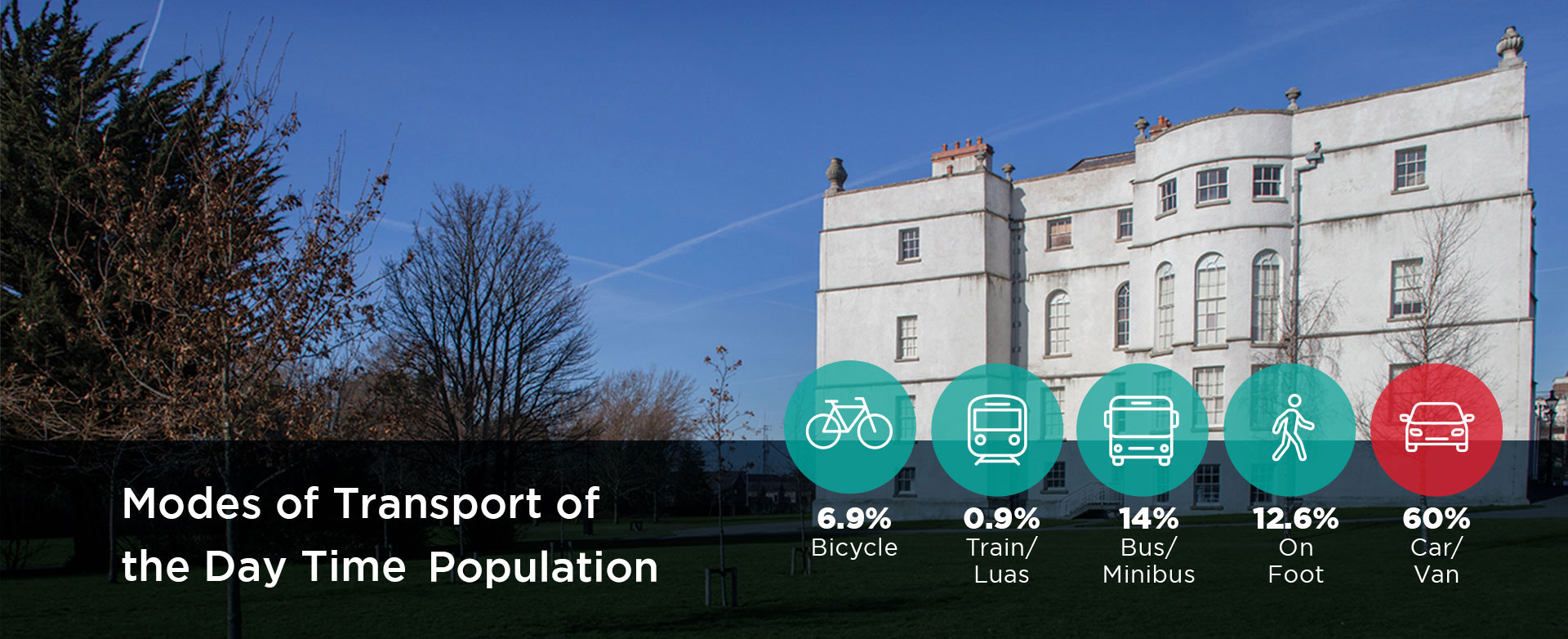
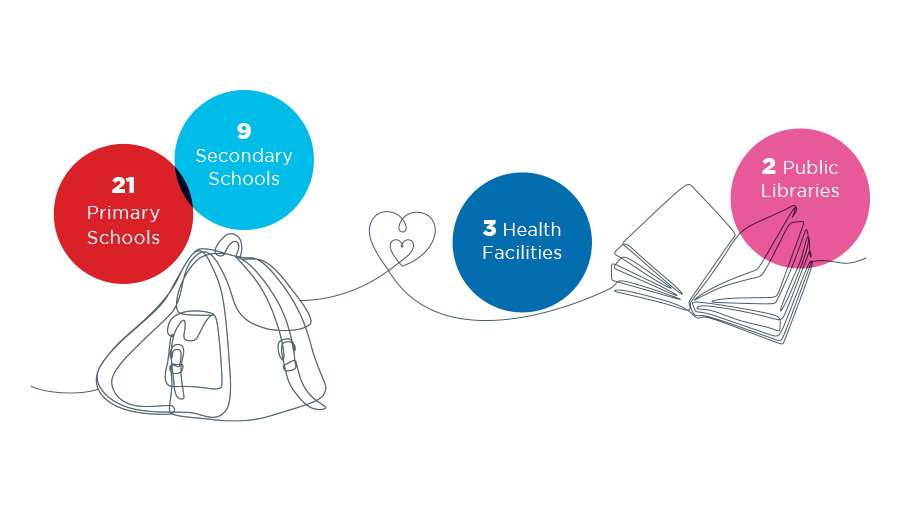
Sustainable neighbourhoods are supported by a range of community facilities that are fit for purpose, accessible and adaptable now and into the future. Within this neighbourhood there are:
The Development Plan presents an opportunity to assess the provision of services in this area and to plan for future needs in a strategic and evidenced based manner. A Community Infrastructure Audit (CIA) will be carried out in your neighbourhood to assess existing and plan for future facilities.
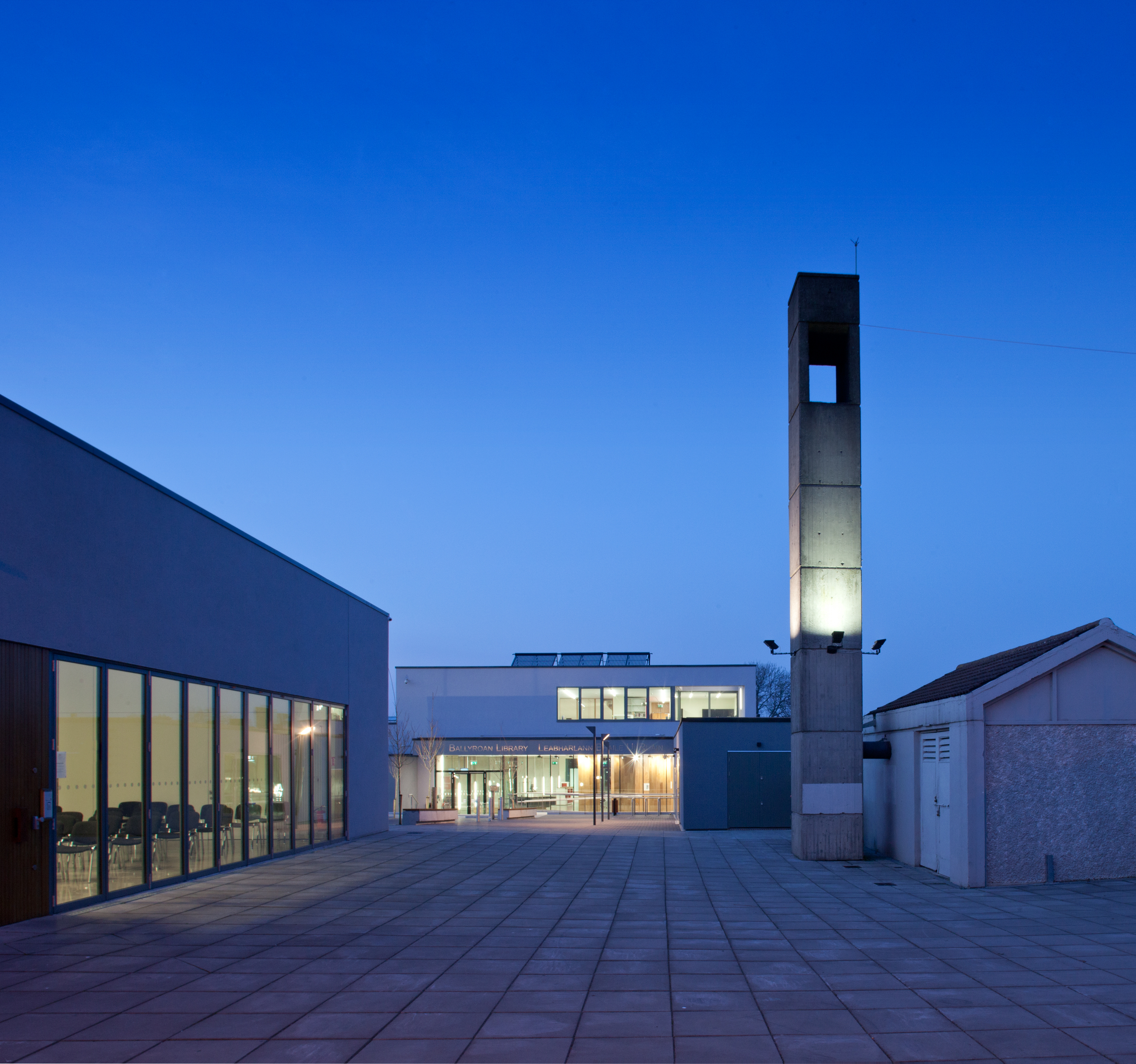
Economic Development
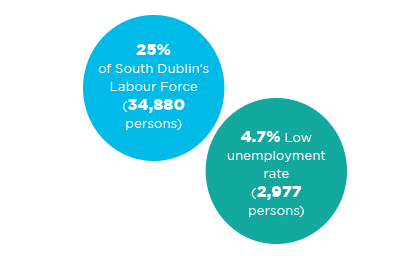
The aim of the Plan will be to encourage the enhancement of these centres in accordance with the retail guidelines, the principles of good urban design and sustainable development. This will help facilitate the efficient use of land at appropriate densities capable of supporting vibrant and compact places that prioritise pedestrian movement. This neighbourhood provides for:
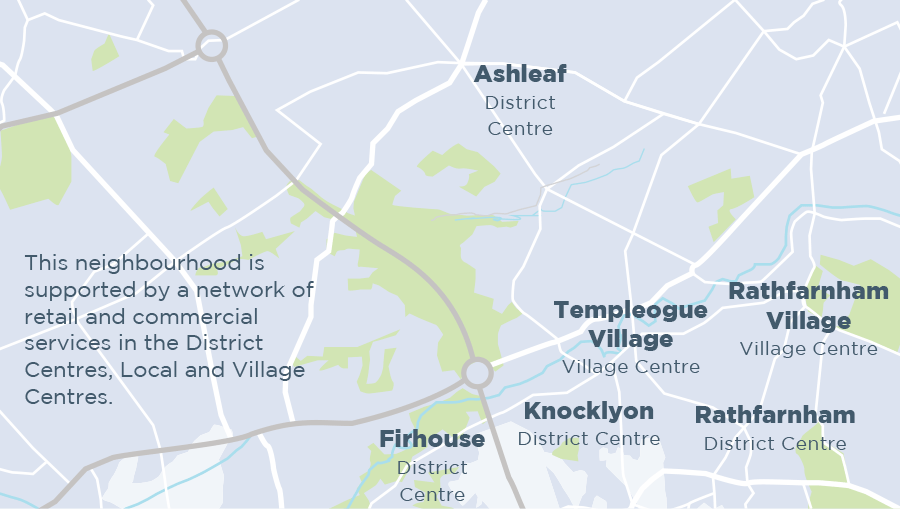
Natural Heritage & Biodiversity
The landscape character for this area is 'Urban' and has formed around existing natural features as an extension of Dublin City Centre. The River Dodder is positioned across the centre of the neighbourhood with a section designated as a proposed Natural Heritage Area. As a long-established neighbourhood area, this area also has significant numbers of mature trees, all of which act as Green Infrastructure and Climate Adaptation measures.
Policy for Natural Heritage and Biodiversity will be developed and implemented through a Green Infrastructure (GI) Strategy which will be prepared as part of the Plan process. The Strategy will
identify potential for a network of natural and semi-natural green spaces, linking parks, gardens, rivers, woodlands, trees and hedgerows.
As well as improving Biodiversity, it provides an opportunity to further enhance the character and identity of the area. The existing South Dublin Landscape Character Assessment 2015 (LCA) will also be reviewed as part of the Plan preparation.
Built Heritage
Thi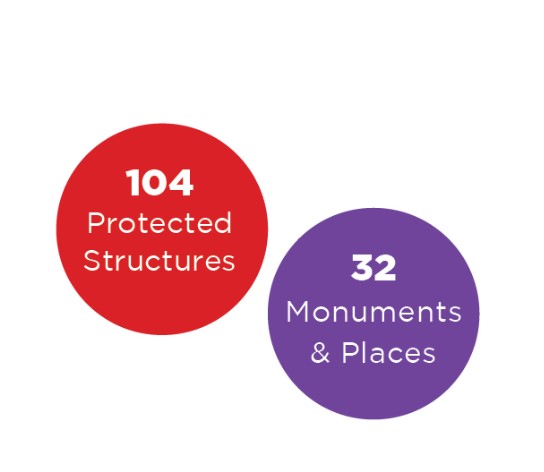 s area contains rich heritage, the conservation and preservation of which will form an important part of the Plan. New development will need to respect the historic built environment, a key component of this area's identity. It is essential to recognise, protect and maintain these attributes now and into the future.
s area contains rich heritage, the conservation and preservation of which will form an important part of the Plan. New development will need to respect the historic built environment, a key component of this area's identity. It is essential to recognise, protect and maintain these attributes now and into the future.
Rathfarnham Village and Willbrook which includes St. Marys Terrace and Willbrook Road are Architectural Conservation Areas (ACA's). Rathfarnham Village provides a high Quality group of structures within the village area located opposite Rathfarnham Castle. Willbrook provides fine examples of groups of dwellings which add character to the area along with the Yellow House and the Church of the Annunciation.
The Loreto Abbey Complex and St. Enda's (Pearse Museum) are sites of National Importance due to their architectural, historical, technical and artistic interest. Four groups of cottages are also identified as ACA's within this neighbourhood.
Infrastructure & Utilities
We can create efficiencies by targeting investment through greater alignment of land use with infrastructure such as public transport and investment in water services. This will help to combat continued urban sprawl and achieve a smaller carbon footprint. There is generally a good bus network in the area and the National Transport Authority is planning to improve this through BusConnects.
Investment in Ringsend wastewater treatment plant and the new Regional plant at Clonshaugh will provide further capacity in wastewater. New development in the area will have to consider energy use including the need to include renewable energy and good design to maximise solar gain and light.
Back to the Top